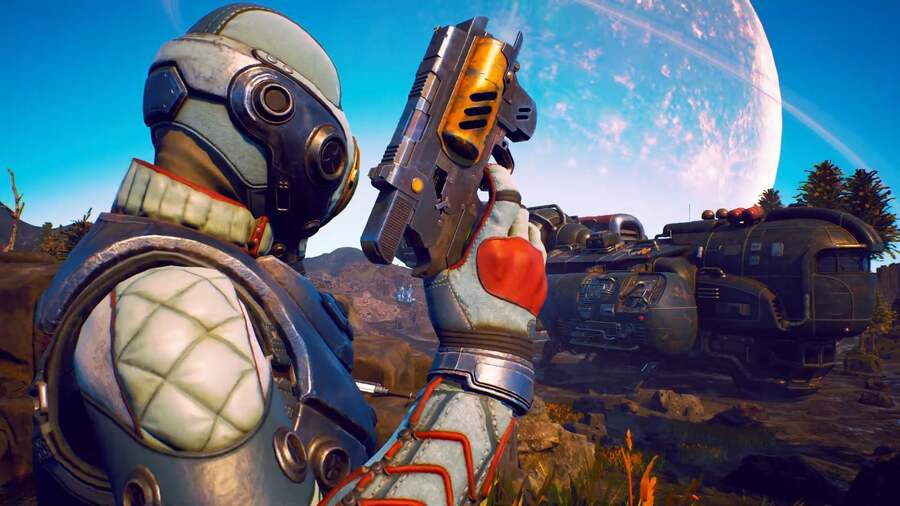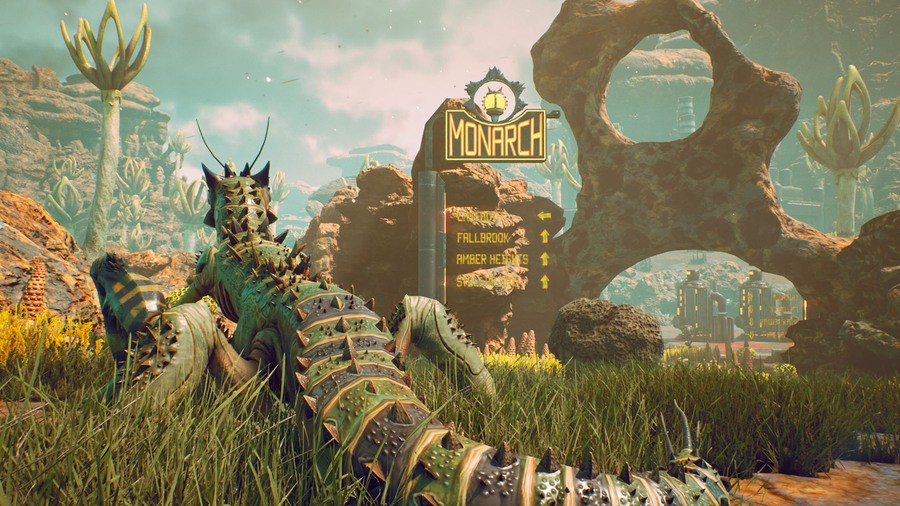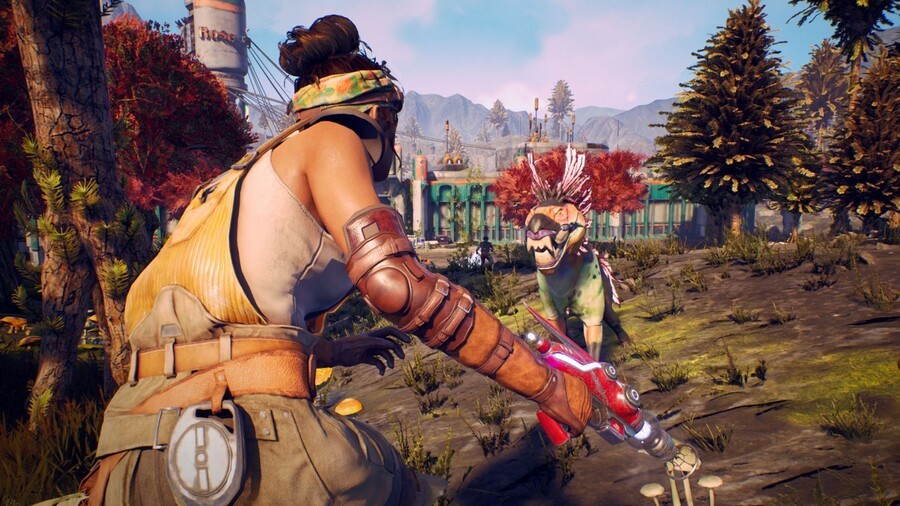
The beauty of The Outer Worlds is that you can play through it however you want. Good guy, bad guy, unstoppable psychopath, corporate lackey, sliver tongued coward -- you can be whoever you want to be, and it's a great role-playing title because of this. But whether you're prepared to do anything for a fistful of bits or you're the hero of Halcyon, there are some things that every good ship captain should remember. In this guide, we're going to list off a number of hints, tips, and tricks to keep in mind as you journey across humanity's crumbling colony.
If you're looking for advice on building your character, be sure to check out our in-depth character build guide.

Yes, there's an easy way to reset your skill points
Every time that you level up in The Outer Worlds, you get 10 skill points to spend. You may find yourself worrying over how you should allocate these points, but don't let your decisions drag you down. Obviously you should be pumping points into the skills that you like using, but if there comes a time when you feel as though you've made a mistake, find comfort in the knowledge that there is a way to reset your progress.
Once your ship's off the ground near the beginning of the game, head up the ladder in the hold. Opposite the engine room, you'll find an interestingly named machine that looks a bit like a workbench. Interacting with this device (and paying a small fee) allows you to reallocate all of your spent skill points, essentially letting you rebuild your character.
Note, however, that you can't adjust your attributes. Base stats like Strength, Intelligence, and Charm can only be determined when you first create your character right at the start of the game.
Weapon and armour condition doesn't make a huge difference
Ah, weapon and armour degradation, everyone's favourite game mechanic. In The Outer Worlds, your equipment starts to break down the more that you use it. Guns and melee weapons gradually lose attack power, while armour absorbs less and less incoming damage. You can have your gear repaired at shops (for a price), or you can use weapon and armour parts that you've scavenged to patch up your equipment manually -- although this does require putting some points in the Engineering skill.
But here's the thing: the condition of your weapons and armour doesn't make a huge difference unless you're playing on the 'Supernova' difficulty level. Sure, the pistol that you've just repaired is going to be more effective than the one that's sitting at a condition of 20%, but we're talking just a few extra points of damage here. What's more, at 0% condition, your equipment doesn't actually break -- its stats just get lowered.
What we're trying to say is you don't have to worry about jumping into the inventory menu after every fight just to make sure that your gear is in perfect condition. It's much more cost effective to wait until you're taking on a particularly dangerous mission before topping up your equipment.
Companion abilities can be a huge help
Every companion in The Outer Worlds has a unique ability that they can unleash during combat, but they won't use these attacks automatically. The left and right buttons on the d-pad are assigned to your current companions' abilities, so it's up to you to aim at an enemy and command your ally to get stuck in.
But what if these abilities are greyed out and you can't seem to use them? Well, you need an Inspiration skill of at least 20 to actually activate companion abilities. It's not a huge investment and in our opinion it's well worth the required skill points. Not only are companion abilities powerful, allowing you to tear through lesser foes and deal sustained damage to burly bosses, they also give you a moment to collect your thoughts during more intense combat encounters. Plus, they look pretty cool.

Tactical Time Dilation isn't just for attacking
Tactical Time Dilation (or TTD for short) is one of the most useful tools in your arsenal. By pressing R1, you can temporarily slow time around you, giving yourself an opening during combat. But there's more to TTD than you might think.
TTD is undeniably useful when you want to hit a tricky opponent with a number of uninterrupted attacks, but if that's all you're ever using it for, you're missing out. Your TTD bar drains incredibly slowly when you don't move or attack, presenting you with the perfect opportunity to take in your surroundings and carefully decide on your next action, even during the most chaotic of battles.
As mentioned, movement does drain your bar, but you can quite easily get away with a quick repositioning. If you activate TTD and see bullets flying towards your head, use it to your advantage and get out of the way while you still can. The same strategy applies to a leaping Canid, or a Primal that's winding up a punch. TTD is an incredibly effective defensive tool when used wisely.
You don't need to hoard your mods
Throughout your travels, you'll pick up a number of weapon and armour mods. At first glance, you might think that you're better off saving these mods for later in the game, especially since they can't be removed once they're attached to your equipment. But honestly, you might as well make use of them now instead of waiting.
You see, mods are pretty common loot drops, and you're going to find a lot of duplicates since there aren't that many to collect. If you come across a weapon that you really like using, slap some mods onto it -- you're bound to find them again at some point, even if you have to buy them from a vendor. Go on, go crazy.
Keep moving in combat
Staying safe behind cover is an entirely viable tactic in The Outer Worlds, but sometimes, you're better off on the move. A lot of enemies prefer close quarters combat, and those with guns will often try to flank you if you stay still for too long.
With this in mind, never forget that you can double tap the X button to perform a dodge -- a quick and very evasive technique that's great against all kinds of creatures. You can get out of a melee-based opponent's range, or you can sidestep a pesky projectile.
But dodging isn't your only movement option. You can't aim, shoot, or swing while you're sprinting, but without having to worry about any kind of stamina meter, sprinting around the battlefield like a madman is actually a good way to avoid incoming attacks. Just make sure that you don't run straight into the claws of a Mantiqueen.
Bonus tip: stand still and get a nice cinematic camera view of your character
Here's one last tip for you. If you stand still for a about a minute or so, the camera will zoom out and start to rotate around your character. Since The Outer Worlds is a first person game, the only time you ever really get to see your character is when you visit the equipment screen, so this is a nice little touch.
Comments 4
Good to know and now I'll use my mods that I'm carrying.
Played a couple of hours this morning before work and I'm really enjoying it so far, shortly after landing some nice young man gave me his gun (after some persuasion) and I promptly shot him in the face afterwards. Shortly after I found a couple of his coworkers and convinced them to go attack some bandits before claiming some poor unfortunate souls ship as my own, the A.I. didn't seem to care, I then of course lied about the fact it was now mine as I'm not paying any fines and headed off to town. After poking about there for a bit I'm off to switch off the power of some deserters hideout whether they like it or not, at least I have a nice young lady for company along for the journey (well after I finish my shift at my real world job that is)
Nice tips. I'm having fun so far with my character who looks like Leeloo from The Fifth Element. Bada boom.
@ShogunRok not sure if you want to add here or elsewhere but to very useful options are in the settings, under gameplay uncheck "show companion helmets" if you want to see their faces whilst exploring. Even more useful under UI uncheck "show base item stats" now you inventory will show the true damage weapons will do based upon your character build
@carlos82 Those are great tips. If we update this article I'll definitely add them in. Thanks!
Tap here to load 4 comments
Leave A Comment
Hold on there, you need to login to post a comment...